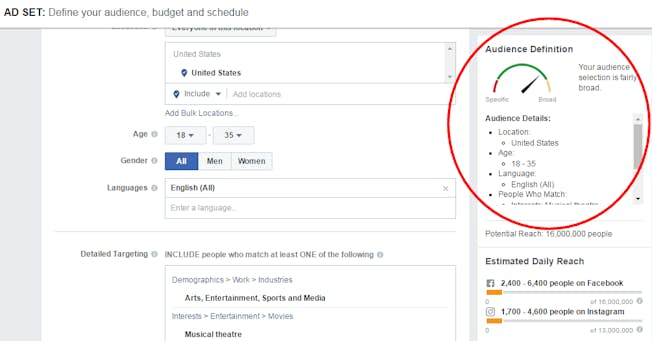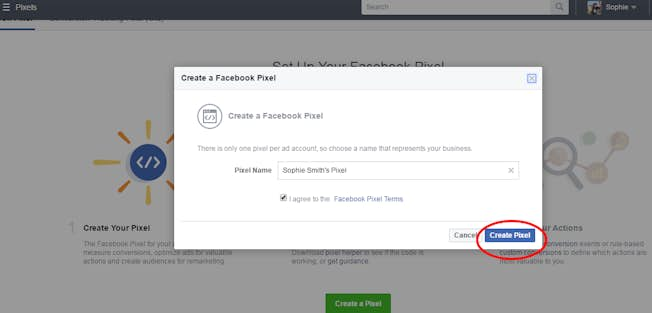Sep 11, 2018
The Ultimate Guide to Optimized Facebook Ad Campaigns
More than 1.8 billion people use Facebook every day to stay connected, to share and to learn. As the most ubiquitous social media channel in the world, it’s no surprise that marketers regularly turn to it in an attempt to enhance their digital strategies. Whether you want to raise brand awareness, drive sales or both, social media advertising is fast becoming one of the most popular and productive conversion channels.
We’ve outlined some simple tactics you can adopt to ensure your Facebook ads are fully optimized, so you can capitalize on the revenue-generating power of social!
Take Advantage of Targeting Options
One of the reasons Facebook advertising boasts such strong conversion rates is because of its advanced and highly detailed targeting options. This level of specificity means that you are in a position to make sure your ads are only displayed to the audience segments that are highly likely to engage with them.
In short, Facebook’s targeting options allow you to expose your brand to the right customers at the perfect point in the sales funnel. Just in case you weren’t convinced of their seemingly endless nature, we’ve listed the main selections below:
- Location
- Age
- Gender
- Relationship status
- Languages
- Education level
- Work
- Financial status
- Ethnic affinity
- Generation
- Parents
- Life events
- Politics
- Interests
- Behaviors (digital activities, charitable donations, purchase behavior etc.)
- Connections
Before you become overwhelmed by the volume of choice, or feel obliged to try using as many of them as possible, don’t forget to align your targeting options to your overall campaign goals. If you run an eCommerce business, then it may not necessarily make sense to use streamlined location targeting if you offer worldwide shipping options. Similarly, unless you offer a specialist product or service, you may not need to avail of ethnic affinity targeting.

Advanced targeting options, when used considerately, can maximize return on investment (ROI) and generate more conversions. Just try to avoid casting your targeting net too narrowly – this could lead to isolating a large part of your potential market.
“Avoid overusing Facebook targeting options – they could end up isolating your target audience.”
Test Your Ad Images
Did you know that Facebook posts with images see over double the engagement of those without them? This extends to your ads as well. The more visually compelling your Facebook ad, the greater the chances it will enjoy an increased click-through rate.
Consider your brand. What products or services do you sell? What is your market positioning? What kind of identity do you want to cultivate? Who are your target audience segments? It may seem excessive, but asking yourself these questions will ensure that you select the best images to complement your ad text and maximize conversion.
You can use multiple pictures for each ad. When your ad runs, different versions will be displayed to different people. We’ve already discussed the benefits of A/B testing in our beginner's guide. In this context, it will help you to quickly and easily ascertain which images will help your ad to perform best.
You can use an app such as Pablo by Buffer or Canva to create a design for your ad image that involves overlaying text. This is an effective way to include as much information as possible, which is important as you only have 25 characters for your ad’s headline, 90 characters for the main ad copy, and 30 characters for a link description. However, don’t forget that text can’t take up more than 20% of the space in your image.

This ad (above), from project management software provider Slack, is the perfect example of how you can use imagery to make a strong impact and illustrate your brand’s unique benefits and distinct personality.
Create Separate Ads for Mobile
Mobile devices are, inarguably, an integral part of our daily lives. Whether it’s a phone or a tablet, we use them to research, communicate and purchase to an increasing extent. To put it into perspective, there are over 1.2 billion people accessing the Internet from their mobile devices. Some 72% of mobile device owners make purchases from them on a weekly basis. And more than 700 million people access Facebook on their phones and tablets every day.
“72% of mobile device owners make purchases from them on a weekly basis.”
These statistics, combined with the fact that Google now prioritizes mobile content during search engine indexing, highlight the importance of giving mobile marketing and advertising a special emphasis. This should include your Facebook ad campaigns.
Creating separate ads for mobile and desktop will allow you to optimize them accordingly. You’ll be able to manage bids, customize imagery and video content, and use appropriate calls to action. The nuances between mobile and desktop may be subtle, but they’re worth acknowledging. For example, you should use shorter video clips for mobile, ideally between 15 and 20 seconds long.
It’s also an ideal method for determining which platform is driving more conversions for your campaign, which means you can adjust your spend and enhance results. If you find that desktop ads ultimately convert better, you can edit your mobile ad copy and destination URLs with this in mind, so your mobile ads can assist, rather than directly generate those conversions.
“Create separate ad sets for mobile and desktop ads within your Facebook campaign structure. This level of organization will help you to optimize them accordingly.”
Use Conversion Tracking
You know that Facebook ads have the ability to increase ROI – but how can you be certain? Being able to measure the effectiveness of your ads, and whether or not they’re helping you to achieve your business goals, is essential to guarantee the ongoing success of your campaign. All you need to do is implement conversion tracking and pixels.
Simply put, conversion tracking allows you to measure the number of conversions for which your Facebook ads are directly responsible, i.e. the actions they take after they’ve viewed your ads.
You can create a Facebook pixel, which is a piece of code that you can add to the pages of your website on which conversions happen, be it a product page, a “Contact Us” page or, in the instance of an eCommerce website, a checkout page. The pixel will audit the actions people take after they click your ad, which will help you to calculate your return on ad spend and adjust your campaign settings where necessary.
It’s very easy to create this Facebook pixel. All you need to do is access the Facebook Ads Manager, click the 'Facebook Pixel' tab, then click 'Create a Pixel' and finally click 'View Pixel Code'. Copy the code and paste it into the tags of the pages you want to track.

Related
Upgrade to Power Membership to continue
your access to thousands of articles, toolkits, podcasts, lessons and much much more.
Become a Power Member- Login
- View Courses
- - - -
- Courses
- Resources
- - - -
- My Account
- Change Password
- Logout




